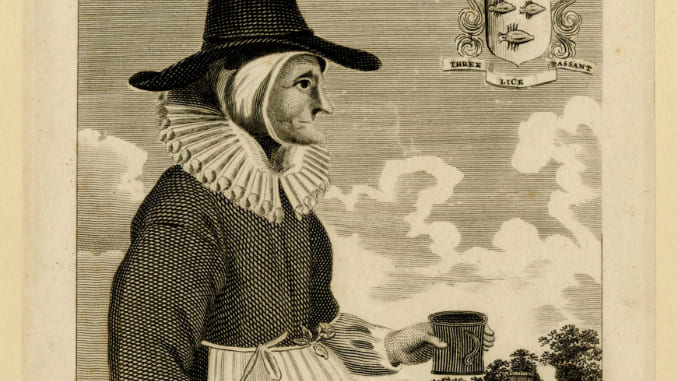Unpacking The Myths Connecting Beer, Alewives And Witches
Photo by Wellcome Library, London/Creative Commons
Outlets like Thrillist promulgate the myth that witches pioneered the art of brewing beer. Even an outlet as storied as the Smithsonian Magazine published a piece advancing this witch’s tale that later required multiple corrections.
The truth behind this witch’s brew of a tale remains murkier than a hazy IPA. True, women played an essential role in brewing beer from its inception around 3000 BCE until around the start of the Reformation in the early to mid-16th century. Brewing generally fell within the domain of women’s household tasks with men, women, and even children drinking low-ABV (1 to 3 percent) beer, as the water was deemed unfit for human consumption.
The first reference to brewing can be found in the Hymn to Ninkasi, the Sumerian goddess of beer, circa 1800 BCE, though this hymn references practices that had been in place for over a thousand years. Also, according to Irish lore, St. Brigid (451 to 525 CE) transformed bathwater into beer (similar to how Jesus turned water into wine at the wedding of Cana). Fast forward to the 12th century, when St. Hildegard Von Bingen’s (1098 to 1179 CE) saintly achievements included researching natural herbs, like hops, which were used in healing practices. In this capacity, St. Hildegard Von Bingen is credited as the first person to add hops to beer, thus improving its taste and preservative qualities considerably.
In a society that offered few financial opportunities for women, homebrewing represented an opportunity for part-time employment for women, which granted them a financial freedom that was rare at the time, according to the Museum of Oxford’s website. The Women in Theology blog expounded on how these home based businesses afforded medieval European women a rare opportunity to earn an income by selling any excess ale to neighbors and passers-by
In larger towns, women had a near monopoly on commercial ale production, and they sold the product to both public houses and private homes as well as colleges and churches. In addition, these brewers, called “alewives” or “brewsters,” would take their brews out onto the street, often advertising their wares by wearing a tall, pointy hat. To signify that their homes sold ale, they would place broomsticks—a symbol of domestic trade—outside of the door. Cats often scurried around the brewsters’ bubbling cauldrons, killing the mice that liked to feast on the grains used for ale.
The Demonization of Alewives
Despite this iconography now associated with contemporary witches, alewives weren’t called witches directly. That said, like Eve who tempted Adam with an apple, alewives were viewed as suspicious temptresses living on the fringes of society who led pious men into a life of sin and gluttony. As Judith M. Bennet observes in, Ale, Beer, and Brewsters in England: Women’s Work in a Changing World, 1300-1600, “Perhaps the earliest and most common representation of an alewife in English culture shows her condemned to eternal punishment in hell.”
-

-

-

-

-

-

-

-

-

-

-

-

-

-

-

-

-

-

-

-

-

-

-

-

-

-

-

-

-

-

-

-

-

-

-

-

-

-

-

-








































